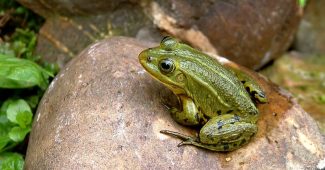Similar to humans, animals also require rest after a tiring day. However, the sleeping patterns of different animals vary, and some may require more sleep than the average human who sleeps for 7-8 hours. Various factors such as their diet, habitat, evolution, and needs can influence the amount of sleep an animal needs.
In other words, sleep is also a means of conserving energy. Here are the top 10 animals that enjoy sleeping the most.
10Squirrel
In winter, squirrels prefer to sleep together in their nests to stay warm. Typically, squirrels sleep in trees or underground burrows at night. However, grey squirrels are primarily active during twilight and dawn, so they sleep during the day while taking several short naps at night. These short naps help them stay alert against predators.
9Hedgehog
Baby hedgehogs need even more sleep and can sleep up to 20 hours each day. During winter, they hibernate and conserve energy by lowering their heart rate, body temperature, and respiration. In the wild, hedgehogs build nests using materials like dead leaves, hedgerows, and hay and prefer sleeping in dark settings that block daylight.
10 animals that don’t sleep for the most prolonged periods
8Tree Shrew
Tree shrews are small creatures that sleep for almost two-thirds of a day. They are diurnal, which means they are active during the day and sleep mostly at night. Tree shrews exhibit consolidated sleeping patterns differing substantially from the sleeping behavior of rodents. Interestingly, their sleep cycles resemble those of humans more than other rodents.
Their longer sleep cycles also help them with memory formation. Tree shrews stay in their nests at night because their eyes are not visible during the day. They are useful for sleep research studies and can provide insight into the regulatory mechanisms and functions of sleep in different rodent species.
7Owl Monkey
Owl monkeys, also called Night Monkeys, have distinct features such as large brown eyes. Being primarily found in the dense tropical rainforests of Central America, they only come out at night. That’s why their population is declining slowly. Despite the absence of daylight, these primates possess exceptional agility and can quickly navigate the rainforest.
They have adapted to their environment and possess excellent night vision, which makes them proficient at hunting and survival in the dark. However, this ability becomes a liability in daylight. Owl monkeys typically leave their sleeping site 15 minutes after sunset, travel in groups until around midnight, and return before sunrise each day.
6North American Opposum
The North American Opossum, also known as the Virginia Opossum, typically sleeps for about 18 hours each day. As a nocturnal animal, it is most active at night and prefers to rest during the day. Opossums prefer to sleep in nests in hollow trees or caves and abandoned buildings or attics on the ground.
They seek out well-covered areas during the day to ensure they are not exposed to light. Opossums usually hide in hollowed trunks or abandoned rodent nests after hunting rather than sleeping while hanging from their tails. They look for resting spots that are safe from predators, well-covered, and in areas close to food and water.
5Python
Pythons are primarily active at night. These nocturnal snakes have specialized eyes that allow them to see movement and hunt in the dark. However, their daytime vision is poor, making it challenging to be active predators during the day. To protect their eyes from UV lighting, they prefer to stay in dark spaces during the daytime.
Although they are nocturnal, predicting whether they will sleep throughout the day is difficult. However, they love sleeping for about 18 hours daily. Their sleeping pattern helps them conserve energy for digesting food correctly, and they take small naps before returning to an active state by observing their surroundings and moving their heads.
4Giant Armadillo
In non-REM sleep, they go through a phase of light slumber before deep sleep, during which their body temperature drops, heart rate slows down, eyes stop moving, and their muscles relax. After an hour, they enter REM sleep, which usually lasts ten minutes. Their brain activity increases during REM sleep, but they experience temporary paralysis.
3Brown Bat
During hibernation, they can withstand dramatic temperature changes without adverse effects and lower their heartbeat by as much as eight beats per minute compared to their summer rate. During this time, they conserve as much energy as possible, sleeping for an average of 20 hours.
2Sloth
Did you know that sloths are adorable creatures that live in the tropical forest canopies of Central and South America? These slow-moving animals spend most of their lives in the treetops, hidden from predators. While some may mistake their leisurely pace for laziness, sloths are actually quite active, moving around and returning to the same spot for rest.
Even though this behavior makes it seem like they sleep for several days long, they typically sleep up to 20 hours daily. In the wild, some sloths sleep about 10 hours a night. They also have favorite sleeping spots that they prefer throughout the day and night.
Related Articles
1Koala
The high branches of trees provide them with protection from predators and a limitless supply of eucalyptus leaves. During the four to five hours koalas are awake, they are insatiable eaters. They can consume almost a whole kilogram of eucalyptus leaves daily and can even stash some for later use.




